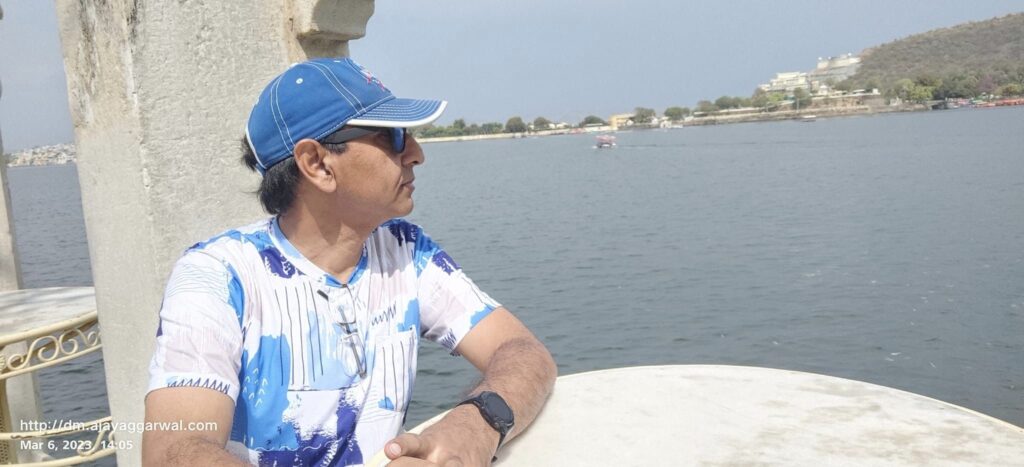Jag Mandir: A Jewel Atop
Udaipur, the “City of Lakes,” boasts a rich tapestry of history and architectural marvels. Among its glistening lakes and majestic palaces lies Jag Mandir, a captivating island retreat steeped in legend and radiating timeless beauty. This 17th-century palace, also known as the “Lake Garden Palace,” beckons explorers with its exquisite architecture, captivating stories, and breathtaking views of Lake Pichola. In this exploration, we delve into the history, architecture, and allure of Jag Mandir, transporting you to a bygone era of royal grandeur.
A Legacy Etched in Stone: The Story of Jag Mandir’s Construction
Jag Mandir’s origins trace back to the 16th century. The credit for its construction is shared by three Maharajas of the Sisodia Rajput dynasty. Maharana Amar Singh, in 1551, laid the foundation for this island retreat. His successor, Maharana Karan Singh, continued the project between 1620 and 1628. Finally, Maharana Jagat Singh I completed the palace complex in 1652, and the edifice was named in his honor.

The construction of Jag Mandir served multiple purposes. Primarily, it served as a summer palace for the Mewar royalty, a tranquil escape from the rigors of court life. Its idyllic setting on an island offered a haven for leisure and entertainment. Additionally, the strategic location on Lake Pichola might have served a defensive purpose, especially during times of conflict.
A Fusion of Styles: The Architectural Marvel of Jag Mandir
Jag Mandir is a captivating blend of Mughal and Rajput architectural styles. Built using yellow sandstone and marble, the three-storied palace complex boasts intricate carvings, arched doorways, and jali work (intricate latticework). The central courtyard, adorned with a lotus-shaped fountain, serves as the heart of the complex.

Each structure within the complex offers a glimpse into the refined tastes of the Mewar court. The Bara Patharon ka Mahal (Palace of Twelve Stones) features stunning black marble pillars and is believed to have been used for royal audiences. The Kunwar Pada ka Mahal (Prince’s Palace) showcases exquisite paintings depicting hunting scenes and courtly life. The Zenana Mahal (Women’s Quarters) offers a glimpse into the private quarters of the royal women, adorned with intricate mirror work.
Legends and Lore: Unveiling the Myths of Jag Mandir
Jag Mandir’s history intertwines with captivating legends that add to its allure. One such legend speaks of Mughal Prince Khurram, later known as Emperor Shah Jahan, seeking refuge in Jag Mandir during his struggle for the Mughal throne. The story goes that he resided here with his wife Mumtaz Mahal, and the beauty of the palace is said to have inspired the architectural brilliance of the Taj Mahal.

Another legend whispers of a secret tunnel connecting Jag Mandir to the City Palace across the lake, used for the royal family’s discreet passage. While there’s no concrete evidence of this tunnel, it adds a touch of intrigue to the palace’s mystique.
A Transformation Through Time: From Royal Retreat to Luxurious Destination
After a period of neglect, Jag Mandir underwent restoration in the late 20th century. Today, it is managed by the HRH Group of Hotels and has been transformed into a luxurious heritage hotel. While preserving its historical essence, the palace now offers modern amenities like a spa, a restaurant showcasing Rajasthani cuisine, and luxurious accommodations. Guests can choose to stay in one of the beautifully restored rooms or opulent suites, offering a taste of royal life.
Experiencing Jag Mandir: A Journey Through Time
A visit to Jag Mandir is an immersion into Udaipur’s glorious past. Reaching the palace involves a picturesque boat ride across Lake Pichola, offering stunning views of the city and surrounding Aravalli Hills. Upon arrival, visitors can explore the various courtyards, admire the architectural details, and marvel at the panoramic vistas of the lake.

The palace museum offers a glimpse into the history of Jag Mandir and the Mewar dynasty. A visit to the cafe or restaurant allows guests to savor a delicious meal while soaking up the enchanting ambiance. For those seeking a truly unique experience, overnight stays at the palace hotel provide a chance to truly step back in time and experience the grandeur of a bygone era.
Beyond the Palace Walls: Exploring Udaipur’s Charm
A visit to Jag Mandir can be seamlessly combined with exploring the other captivating attractions of Udaipur. The majestic City Palace, a sprawling complex overlooking Lake Pichola, offers a glimpse into the opulent lifestyle of the Mewar rulers. A boat ride on Lake Pichola allows visitors to appreciate the beauty of Jag Mandir from a different perspective and explore other island destinations.















